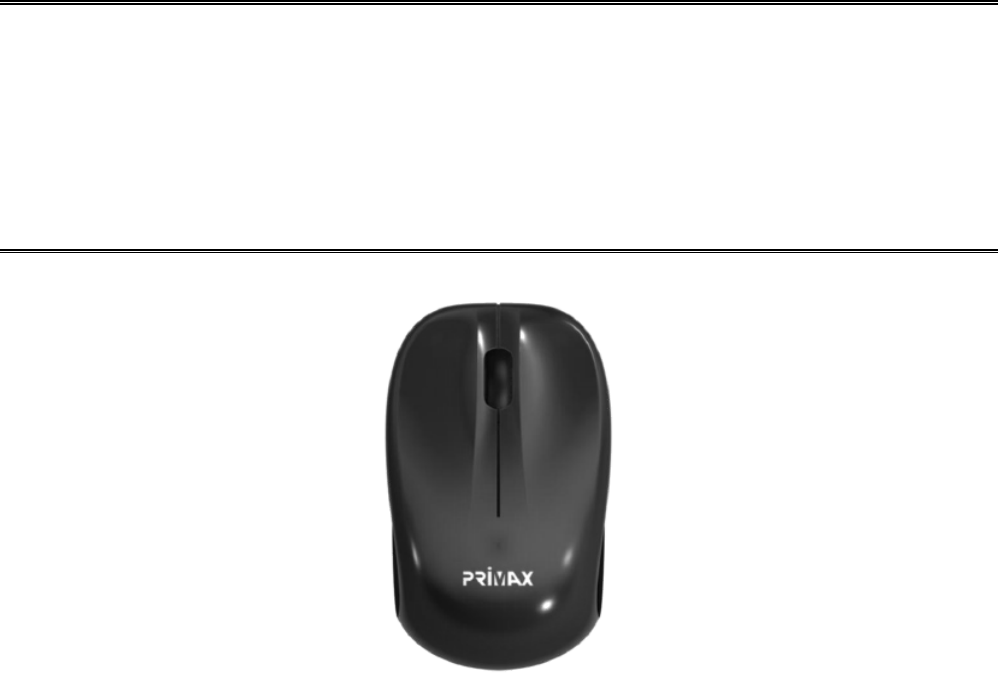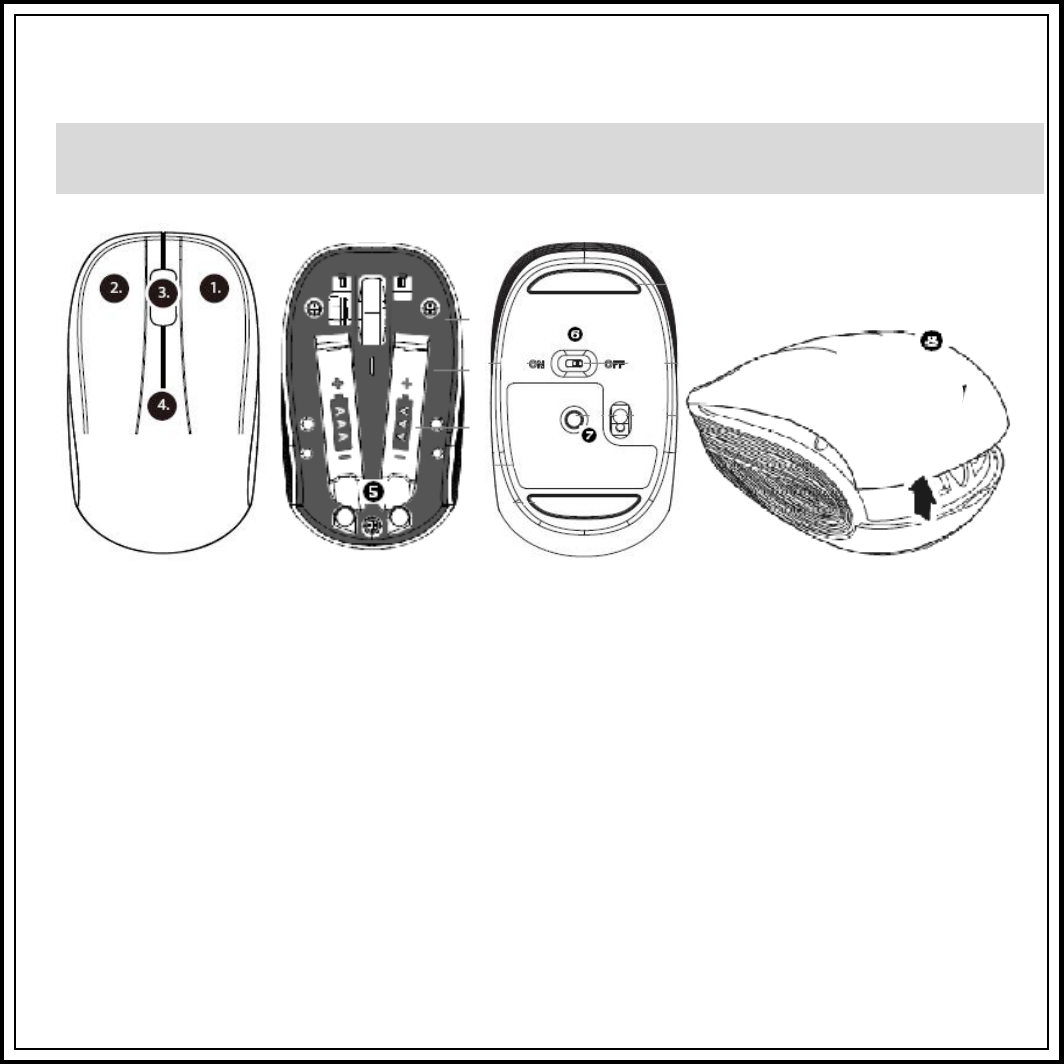Primax Electronics MMOBTEOUL Bluetooth Laser Mouse User Manual Melon BT
Primax Electronics Ltd Bluetooth Laser Mouse Melon BT
User Manual

Melon BT Laser Mouse
User’s Guide
Brand : Primax
Model No :MOBTEOUL
Rating: 5V DC 100mA
Made in China

1
Introduction
Package Contents
· AAA Battery x 2 pc
· User’s Guide x 1
System Requirements
· Pentium processor or equivalent
· At least one USB port (USB 2.0 or 1.1)
· Operating System: Windows® XP with Service Pack 1 or higher,
Windows® Vista, Windows® 7

2
Feature
Melon BT is Bluetooth mouse in mobile size, ambidextrous for both right/left hand
users. Melon BT is Equipped with Laser-based Soc Sensor from Avago that’s
empowered by Bluetooth 2.1 Technology, along with basic mouse 3-button and
wheel support vertical scrolling.
It also provide a low battery indicator on top of the mouse to warning user for
battery change.

3
Function introduction
1. Right Button
2. Left Button
3. Scroll Wheel and Middle button
4. Power LED. A. Power good : Orange ED on 3 sec-> off
B. Low power : Orange LED blinking for 60 seconds
5. Battery Slot
6. Power On/Off
7. Bluetooth Pairing Button
8. Battery cover

4
Pairing Introduction
The Bluetooth connection indication is defined as below:
A: In pairing mode: blue LED starts blinking once every one second, lasting for 2
minutes. As long as Melon BT is successfully paired with the computer, blue LED
will be turned off.
Melon checks the battery status and enables the LED indication:
A: battery status change in active mode
B: mouse is waked up from sleeping mode or standby mode
C: power is manually turned on and off by the sliding switch
The indication sequence in every kind of situation should follow below priority:
A: Power on/off >> Bluetooth connection >> power level

5
Regulatory Compliance
Federal Communication Commission Interference Statement
This equipment has been tested and found to comply with the limits for a Class B digital device, pursuant
to Part 15 of the FCC Rules. These limits are designed to provide reasonable protection against harmful
interference in a residential installation. This equipment generates, uses and can radiate radio frequency
energy and, if not installed and used in accordance with the instructions, may cause harmful interference
to radio communications. However, there is no guarantee that interference will not occur in a particular
installation. If this equipment does cause harmful interference to radio or television reception, which can
be determined by turning the equipment off and on, the user is encouraged to try to correct the
interference by one of the following measures:
- Reorient or relocate the receiving antenna.
- Increase the separation between the equipment and receiver.
- Connect the equipment into an outlet on a circuit different from that to which the receiver is connected.
- Consult the dealer or an experienced radio/TV technician for help.
FCC Caution: Any changes or modifications not expressly approved by the party responsible for
compliance could void the user's authority to operate this equipment.
This device complies with Part 15 of the FCC Rules. Operation is subject to the following two conditions:
(1) This device may not cause harmful interference, and (2) this device must accept any interference
received, including interference that may cause undesired operation.
IMPORTANT NOTE:
Radiation Exposure Statement:
The product comply with the US/Canada portable RF exposure limit set forth for an uncontrolled
environment and are safe for intended operation as described in this manual. The further RF exposure
reduction can be achieved if the product can be kept as far as possible from the user body or reduce
output power if it doesn't affect the transmission/receiving quality.
IC Statement
Operation is subject to the following two conditions: 1) this device may not cause interference and 2) this
device must accept any interference, including interference that may cause undesired operation of the
device.